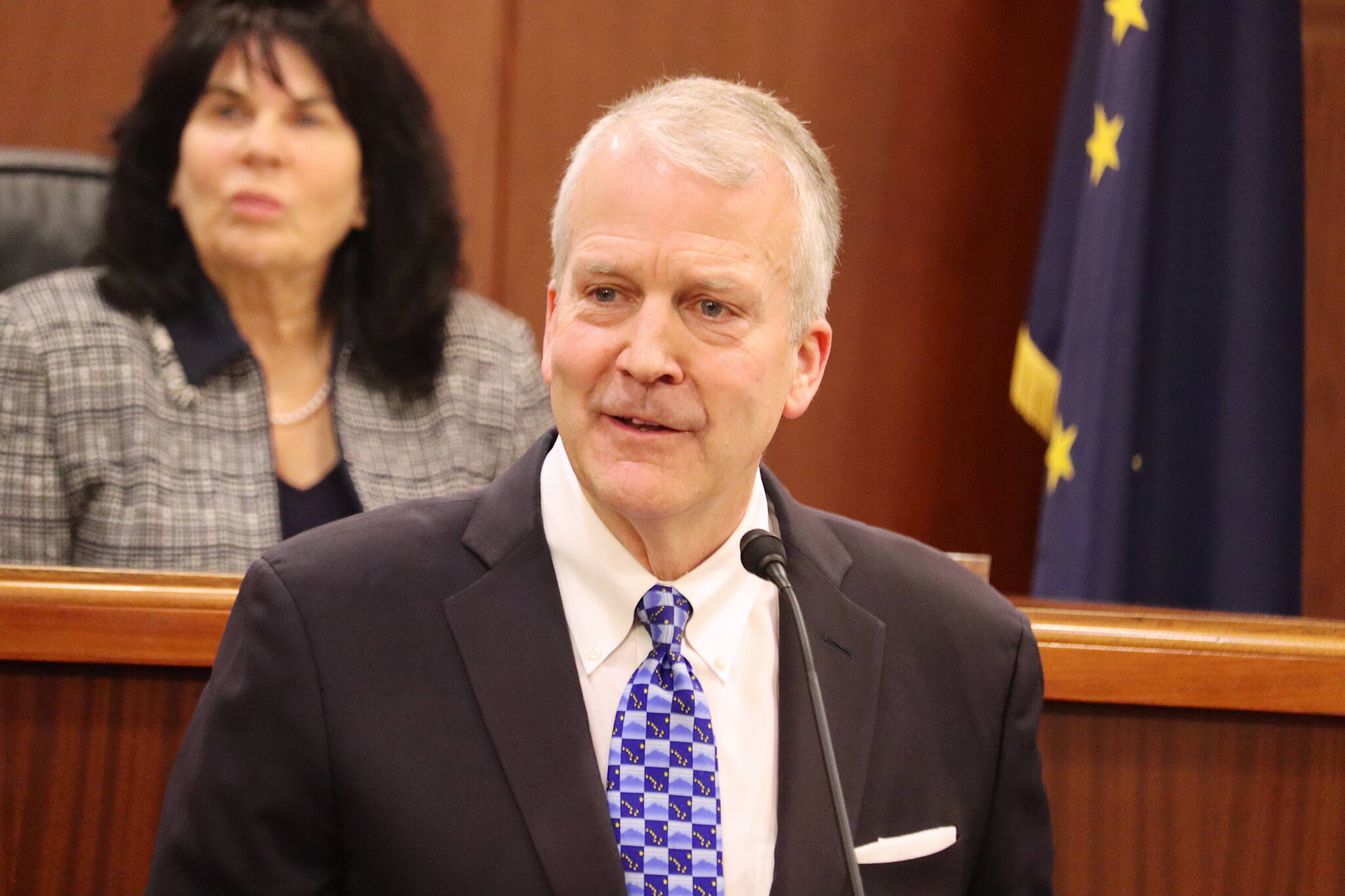Tune out the naysayers is U.S. Sen. Dan Sullivan’s philosophy when it comes to the proposed Alaska LNG project.
Sullivan during his annual address to the Alaska Legislature on Wednesday touted the project, headed up by the Alaska Gasline Development Corp., as one that will “transform” Alaska while supplying “generations” of Alaskans with “affordable, abundant, clean burning” natural gas.
The project, if constructed, would transport natural gas 800 miles via pipeline from the North Slope to Nikiski for liquefaction and export. Construction of the pipeline and its associated facilities are expected to cost about $40 billion, although the estimate is several years old. The state took over the project in 2016 after North Slope oil companies declined to spend additional money on the venture.
Sullivan said Wednesday that he “know(s)” Asian communities are interested in LNG exports because he has met with the president of South Korea three times. Alaska has a track record, he said, of making big projects happen in the wake of international crises, such as the Trans Alaska Pipeline Act, which he said was “100% driven” by the Arab oil embargo that occurred after the Yom Kippur War.
“In 1973, America was like, ‘We need energy,’” Sullivan said. “We have a very similar dynamic right now in Asia, Korea, Japan, Taiwan — particularly Korea (and) Japan. They still rely on Russian oil and gas and right now every one of our allies is desperately trying to get off Russian oil and gas because they don’t want to fund the Putin war machine and they see how dangerous the world is.”
Alaska LNG project leaders described a uniquely favorable climate for the project in the wake of Russia’s 2022 invasion of Ukraine, which they said sent countries traditionally dependent on Russian resources looking to find new suppliers. Recent reports, though, have indicated that the foreign appetite for project exports might not be as ravenous as previously thought.
The Wall Street Journal last summer reported that potential Asian buyers of exports from the Alaska LNG project aren’t confident in the project timeline and believe countries will have other sources of stable natural gas supplies by the time of the project’s tentative completion date in 2030.
Meanwhile, Japan’s LNG imports are in decline, falling last year to their lowest level since 2009. Other LNG suppliers around the world are stepping up production, such as Qatar, one of the world’s biggest producers, which has embarked on a $50 billion expansion of its low-cost LNG production and export capacity.
Some Alaska lawmakers have recently expressed their reluctance to continue funding the Alaska Gasline Development Corp. for a project that, from their perspective, has not progressed and doesn’t have investors, customers, financing or partners. Multiple members of the Senate Finance Committee in January pushed back on the $4.5 million Gov. Mike Dunleavy has set aside in his proposed state budget for the upcoming fiscal year.
“At some point, we need to have a conversation on mothballing there,” said Sen. Bert Stedman, a Sitka Republican. “It appears that that project is uneconomic because there’s nobody standing in line to build it. We need to have that hard conversation at some point. That’s a lot of money going out the door.”
Sen. David Wilson, a Republican from Wasilla, had similar thoughts.
“My concern is that in my eight years of being a legislator, I don’t think they’ve inked one investment,” Wilson said. “So is this a good use of those funds as we have not inked? Or do we need a change in leadership over there?”
Sullivan on Wednesday acknowledged that the project has a lot of variables. He said he’s also taken on the responsibility of promoting the project abroad.
He cited permitting progress under the administration of then-President Donald Trump and the potential for a federal loan guarantee for the project’s construction financing as among the federal accomplishments. A federal loan guarantee, he said, can go a long way in reassuring potential investors.
“It’s a complex project and the commercial side has to pan out, but what I’ve been trying to do is de-risk from the permitting side this project because the developers often get really nervous about — ‘Jeez is this going to take me 10 years?’ and ‘What happens if there’s a lawsuit?’ ‘What happens if the federal government says no?’”
Sullivan said that it would be a “disaster” if Alaska was forced to import and pay a premium on foreign LNG to power Southcentral Alaska as Cook Inlet natural gas production declines, and that the state’s leaders should be doing everything they can to make the project successful. His strategy is to stay focused and block out those casting doubt on the project.
“There are a lot of naysayers out there — ‘This will never happen, forget it’ — I just think, tune them out (and) focus on it,” he said.
Reach reporter Ashlyn O’Hara at ashlyn.ohara@peninsulaclarion.com.
This reporting from the State Capitol was made possible by the Alaska Center for Excellence in Journalism’s Legislative Reporter Exchange. Alaska news outlets, please contact Erin Thompson at editor@peninsulaclarion.com to republish this story.

